
Mastering Descriptive Language: The Power of Adjective Fill-in-the-Blanks Exercises
Language, at its core, is a powerful tool for communication, allowing us to convey not just facts but also feelings, nuances, and vivid imagery. While nouns and verbs form the backbone of any sentence, it is often the humble adjective that breathes life into our words, transforming mundane descriptions into rich, engaging narratives. Adjectives are the descriptive brushes that paint our verbal pictures, adding color, texture, and emotional depth. They tell us "what kind," "which one," or "how many," providing essential details that differentiate a "house" from a "quaint, old house with a red roof."
For English language learners, students, and even native speakers looking to refine their linguistic precision, mastering the use of adjectives is a critical step towards achieving fluency and eloquence. And one particularly effective method for solidifying this understanding and expanding descriptive vocabulary is through the use of adjective fill-in-the-blanks exercises. These structured activities provide a focused, contextual environment for learners to practice selecting and applying adjectives correctly, moving beyond rote memorization to practical application.

The Indispensable Role of Adjectives in Language
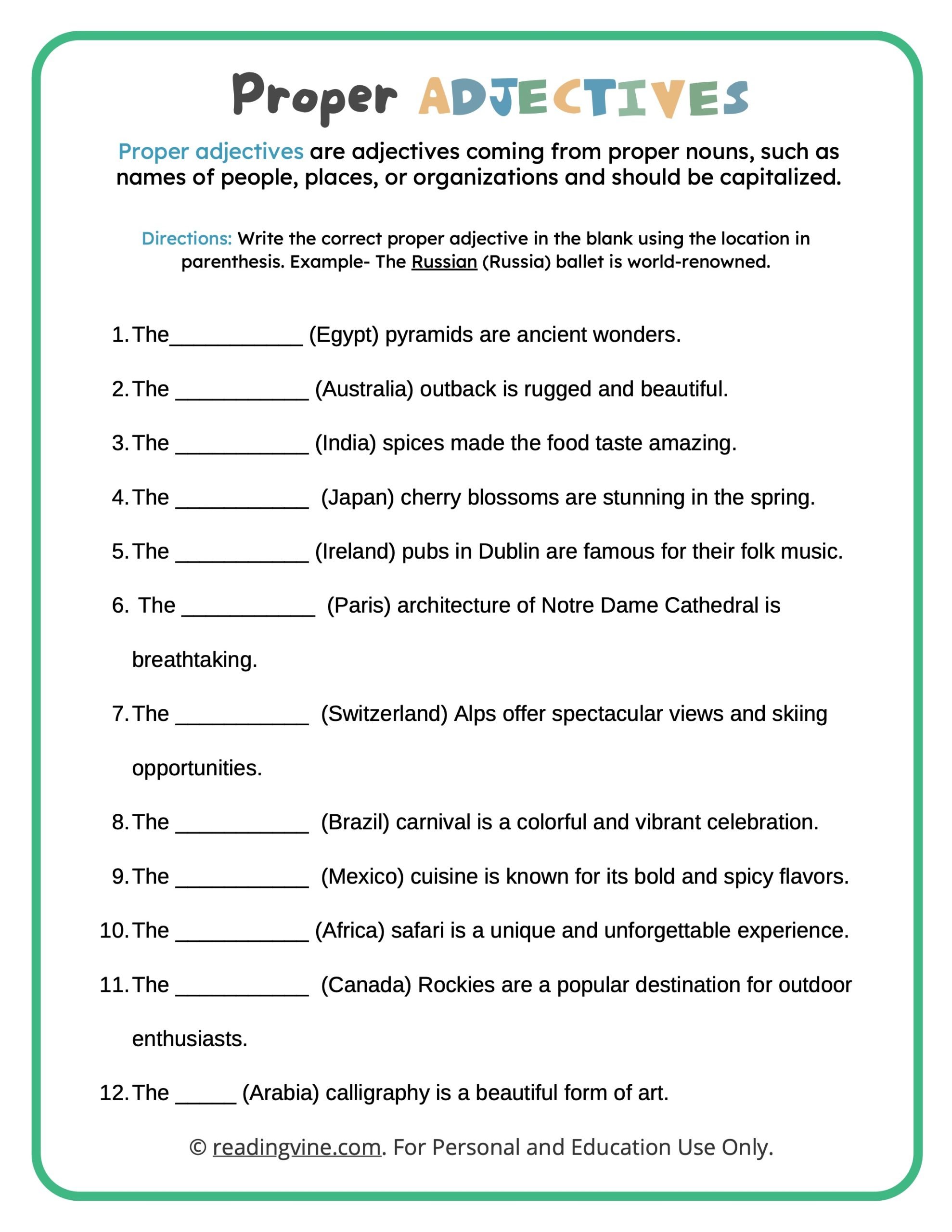
Before diving into the benefits of fill-in-the-blanks, it’s crucial to appreciate why adjectives are so indispensable. They serve several vital functions:
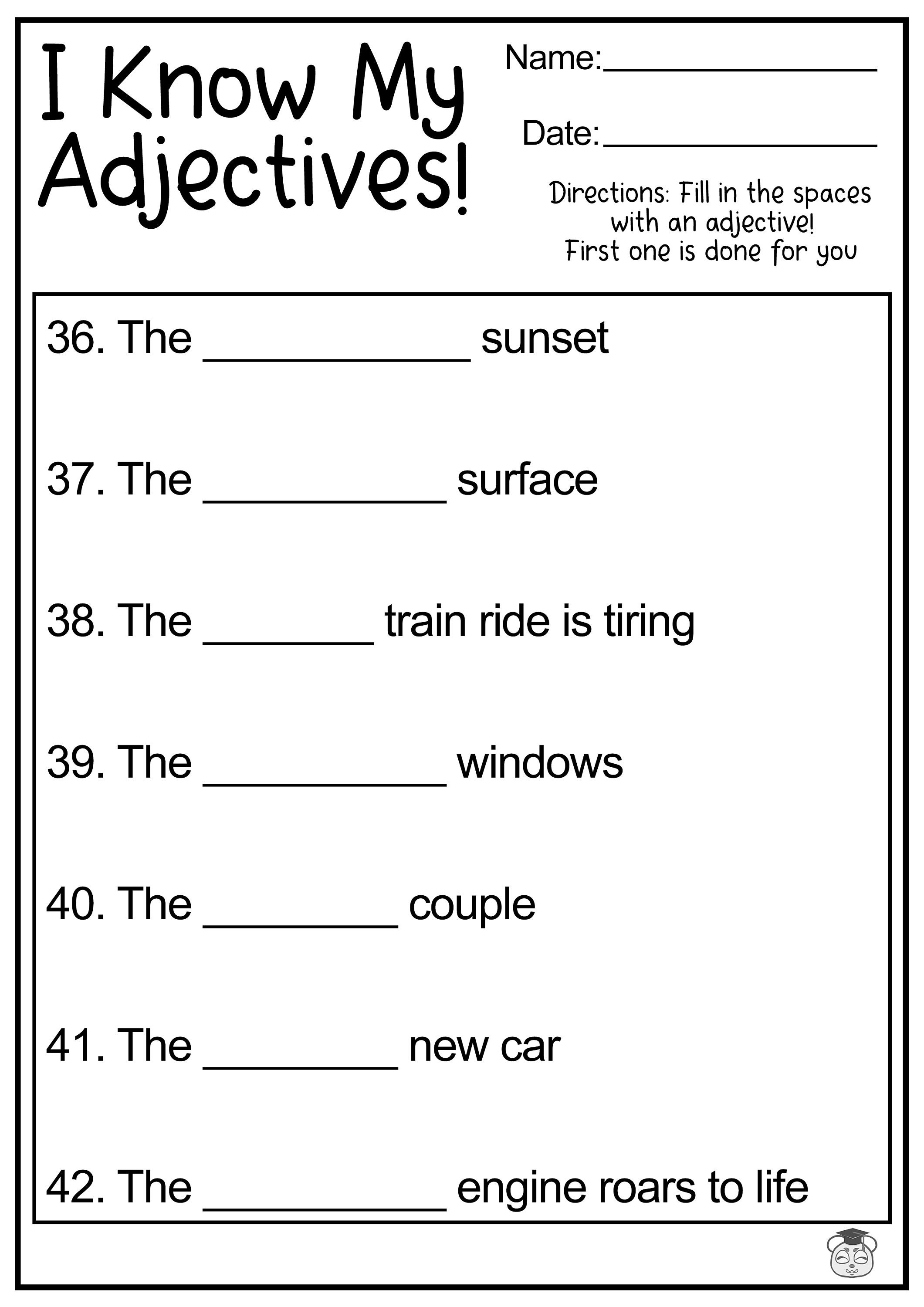
- Adding Detail and Specificity: Instead of saying "The dog ran," an adjective allows us to say "The energetic dog ran swiftly." This adds immediate detail.
- Creating Imagery: Adjectives engage our senses. "A sweet, melodic tune" or "a rough, craggy mountain path" conjures clear images.
- Expressing Emotion and Opinion: Adjectives allow us to convey our feelings. "That was a terrible movie," or "She has a kind heart."
- Differentiating Similar Nouns: "The small box" versus "the large box" helps distinguish between identical objects.
- Enhancing Persuasion and Argument: In persuasive writing, carefully chosen adjectives can sway opinions and evoke strong responses.
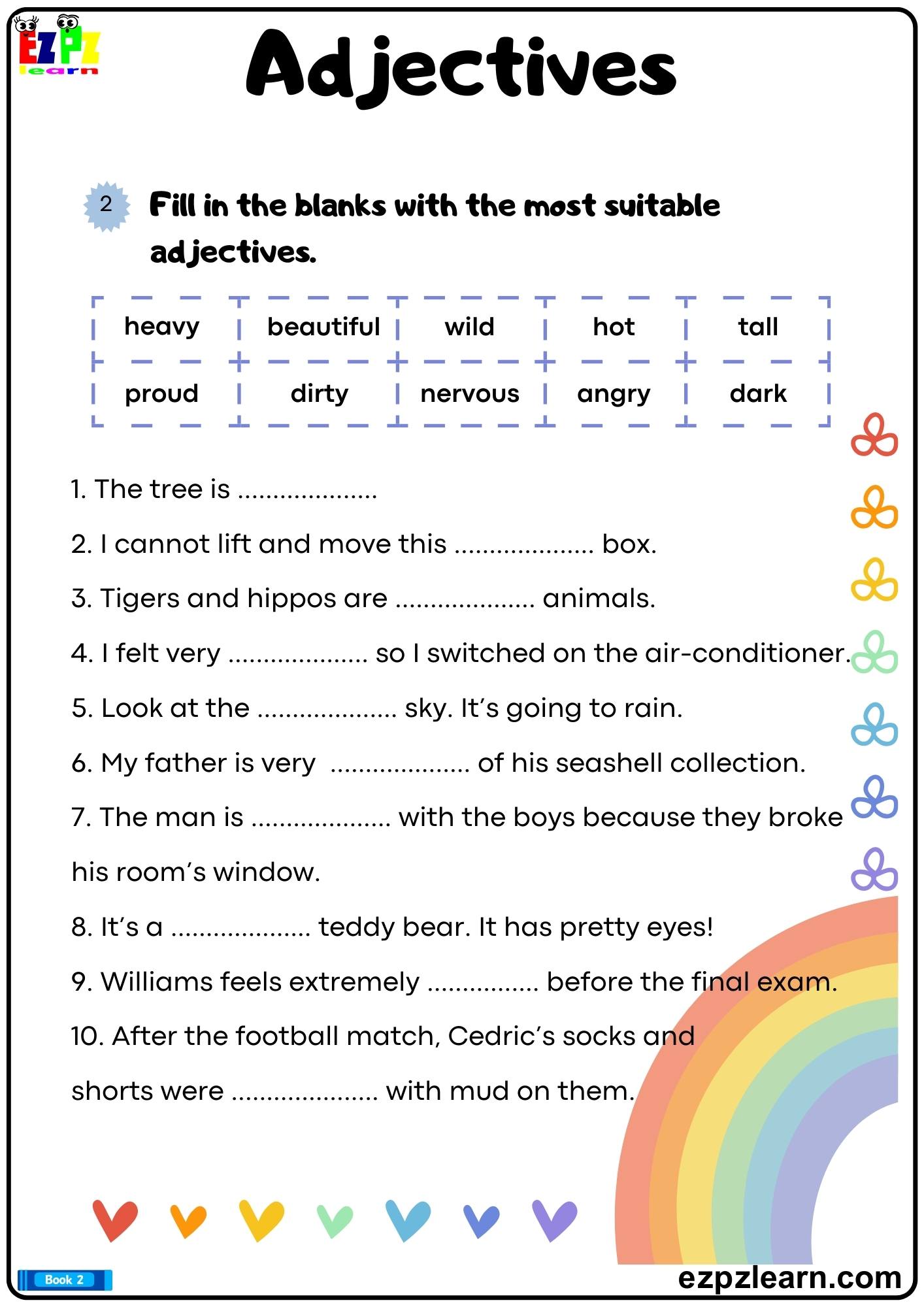
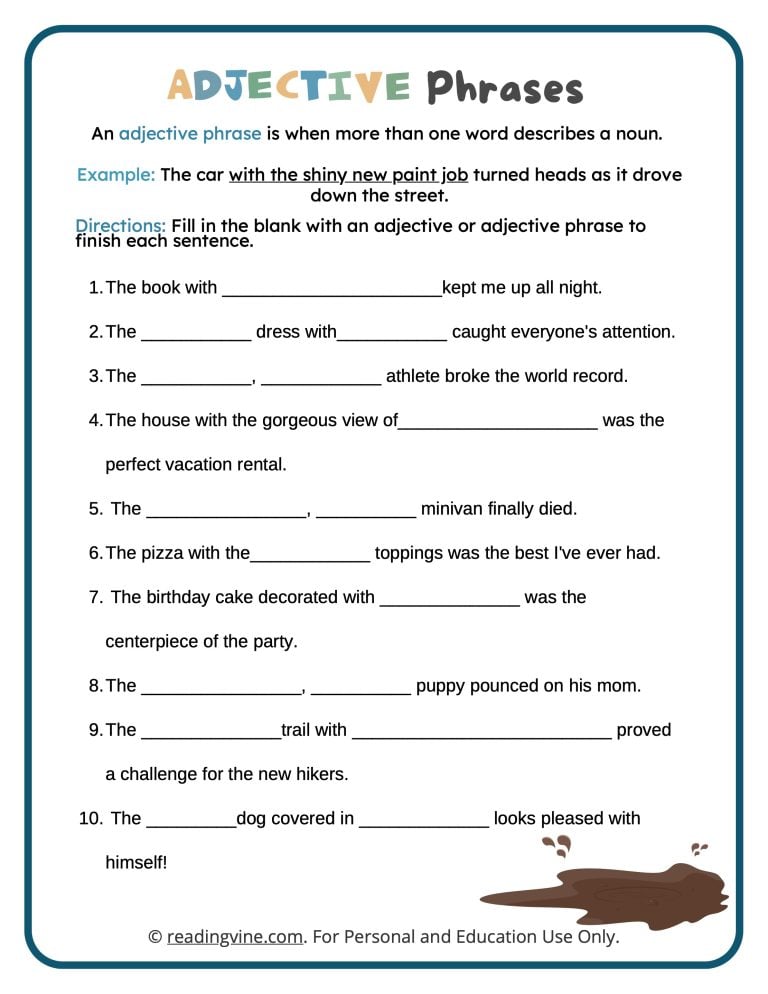
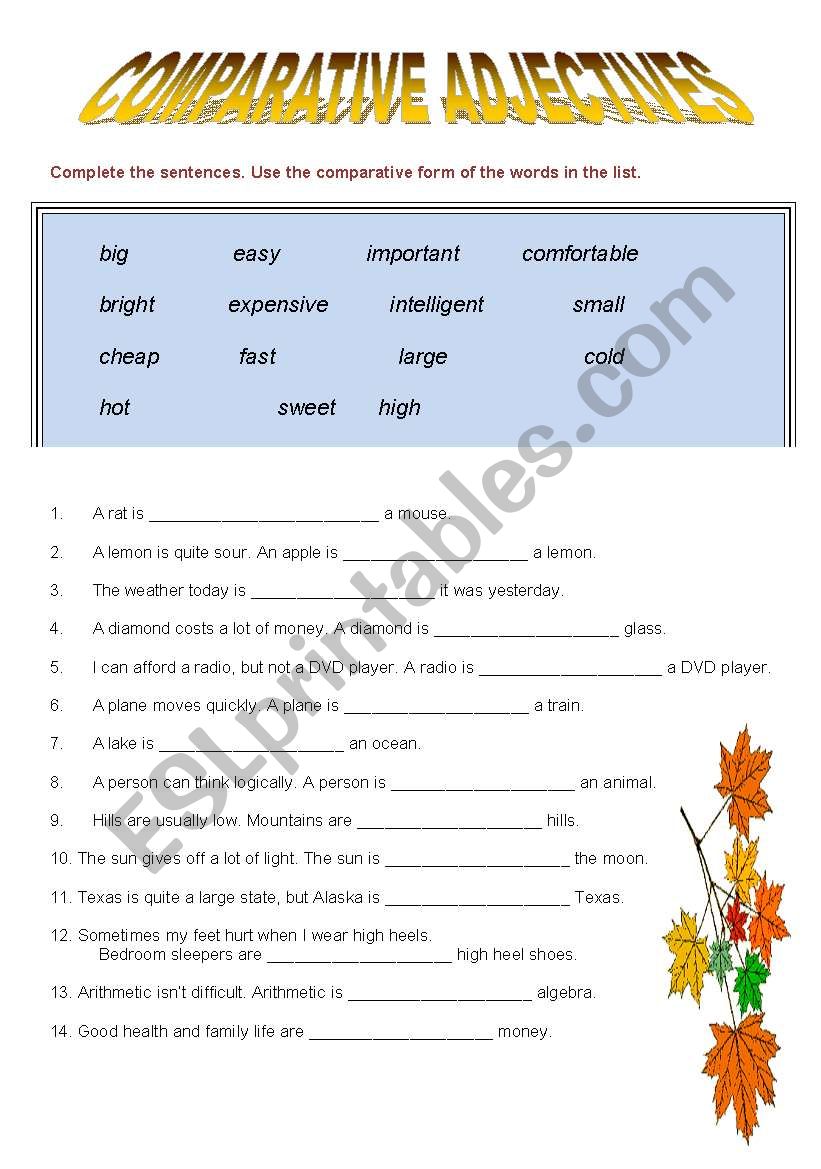
Without adjectives, our language would be flat, imprecise, and devoid of the richness that makes communication truly effective and engaging.
The Transformative Benefits of Adjective Fill-in-the-Blanks Exercises
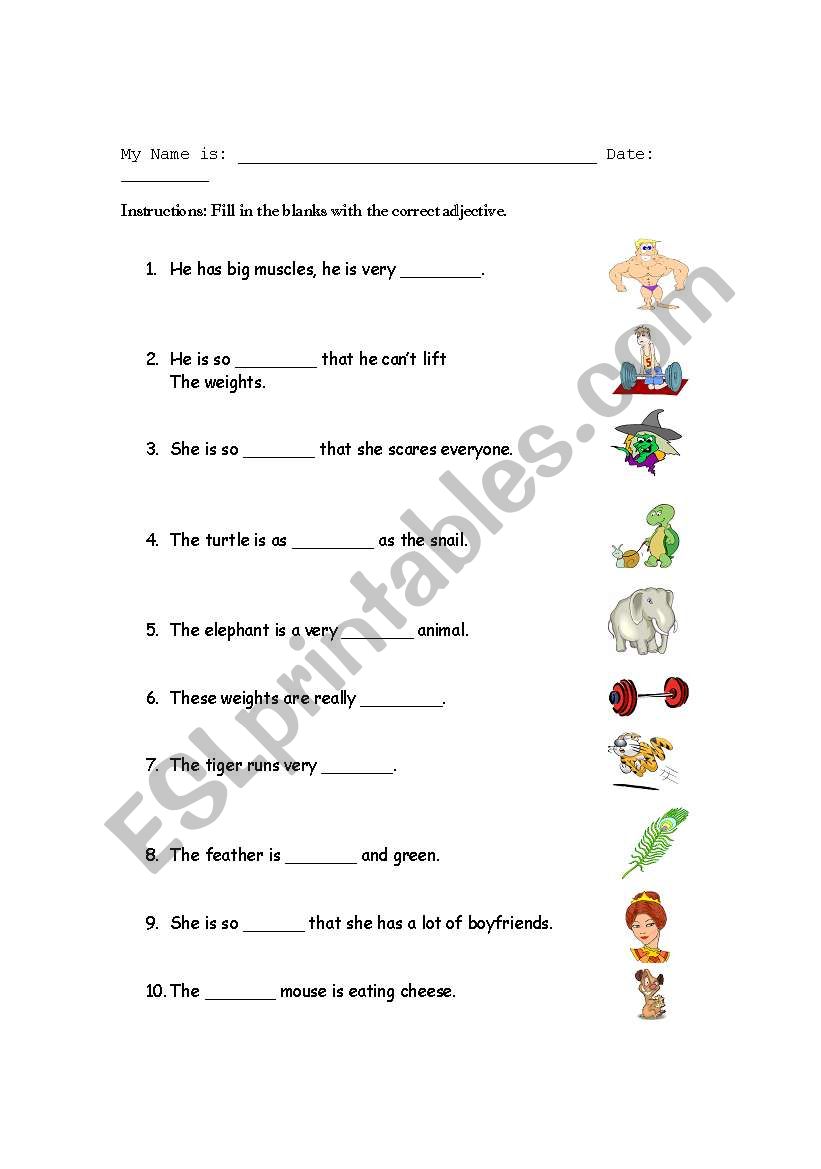
The power of adjective fill-in-the-blanks lies in their multi-faceted approach to language learning. They are not merely tests of vocabulary but comprehensive tools that foster a deeper understanding of grammar, context, and semantic nuance.
1. Vocabulary Expansion in Context
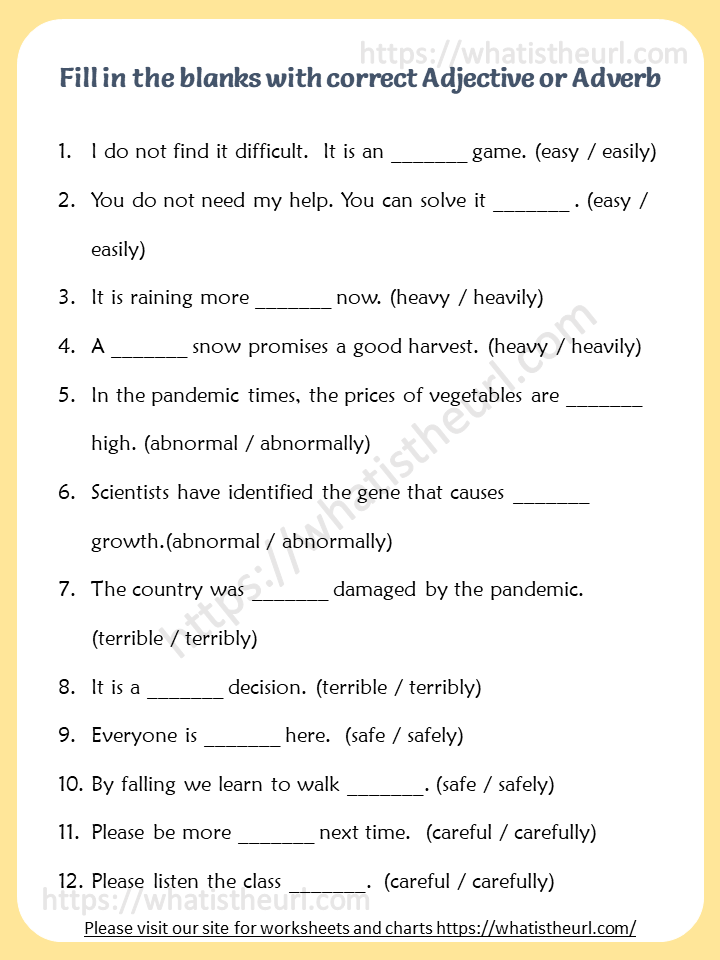
One of the most immediate benefits of these exercises is vocabulary growth. Unlike simply memorizing lists of words, fill-in-the-blanks require learners to consider the meaning of an adjective within the context of a sentence. For instance, a learner might encounter a blank in a sentence like "The ___ cat purred contentedly." Possible options could include "happy," "fluffy," "sleepy," or "tiny." By choosing the most appropriate word, they not only reinforce the meaning of the chosen adjective but also learn how different adjectives create different mental images and implications. This contextual learning leads to better retention and more natural usage.
2. Reinforcement of Grammatical Rules and Placement

In English, adjectives typically precede the noun they modify (e.g., "a beautiful flower") or follow a linking verb (e.g., "The flower is beautiful"). Adjective fill-in-the-blanks naturally reinforce these fundamental grammatical rules. By repeatedly placing adjectives in their correct positions within a sentence, learners internalize these patterns without needing explicit rule memorization. They develop an intuitive sense of where adjectives belong, which is crucial for both reading comprehension and constructing grammatically sound sentences.
3. Developing Nuance and Precision
English is rich with synonyms, and understanding the subtle differences between them is a hallmark of advanced proficiency. A simple word like "good" can be replaced by "excellent," "superb," "satisfactory," "adequate," or "mediocre," each carrying a distinct connotation. Adjective fill-in-the-blanks exercises often present learners with options that are close in meaning but differ in intensity or specific application. This forces them to think critically about the exact nuance required by the sentence, honing their ability to choose the most precise and impactful word. For example, distinguishing between "small," "tiny," "minuscule," and "petite" based on context is a skill best developed through practical application.
4. Enhancing Reading Comprehension
When learners encounter descriptive language in texts, understanding the adjectives used is paramount to grasping the full meaning and tone. By actively engaging with adjective selection in fill-in-the-blanks, they become more attuned to the role of adjectives in the texts they read. They learn to identify key descriptive words that shape characters, settings, and events, leading to a richer and more comprehensive reading experience. This active recognition translates directly into improved analytical skills when reading.
5. Improving Writing Fluency and Style
The ultimate goal of language learning is effective communication, particularly in writing. Consistent practice with adjective fill-in-the-blanks directly translates into better writing skills. As learners become more confident in selecting and using adjectives, their written descriptions become more vivid, their narratives more engaging, and their arguments more persuasive. They move beyond simplistic descriptions to craft prose that is both clear and captivating, adding depth and personality to their written work. This mastery allows for more sophisticated and expressive communication.
6. Fostering Critical Thinking and Problem-Solving Skills
These exercises are not just about finding the "right" answer; they involve a degree of critical thinking. Learners must analyze the context of the sentence, consider the connotations of each potential adjective, and evaluate which word best fits the overall meaning and tone. This process strengthens their analytical and problem-solving abilities, skills that are transferable far beyond language learning. They learn to weigh options, justify choices, and understand the subtle interplay of words.
7. Active Learning and Engagement
Unlike passive memorization, fill-in-the-blanks are interactive and require active participation. This engagement makes the learning process more enjoyable and effective. The immediate feedback (whether from a teacher or an answer key) reinforces correct choices and helps correct errors promptly, solidifying learning. The challenge of finding the perfect word can be intrinsically motivating, transforming what could be a mundane grammar lesson into an engaging puzzle.
8. Preparation for Standardized Tests
Many standardized English proficiency tests (like TOEFL, IELTS, SAT, ACT) include sections that assess vocabulary and grammar in context, often featuring questions similar to fill-in-the-blanks. Regular practice with adjective fill-in-the-blanks exercises can significantly improve performance on these tests by familiarizing learners with the question format and strengthening the underlying linguistic skills required.
Designing and Utilizing Effective Adjective Fill-in-the-Blanks Exercises
To maximize the benefits, these exercises should be designed and utilized thoughtfully:
- Vary the Difficulty: Start with simpler sentences and common adjectives, gradually introducing more complex vocabulary and nuanced contexts.
- Provide a Word Bank: For beginners, offering a list of adjectives to choose from reduces cognitive load and focuses on contextual application.
- Encourage Open-Ended Responses: For advanced learners, leaving the blank entirely open allows for greater creativity and reinforces a broader vocabulary recall.
- Ensure Clear Context: The sentences should provide enough information for the learner to logically deduce the most appropriate adjective. Ambiguous sentences can lead to frustration.
- Focus on Specific Categories: Exercises can be themed (e.g., adjectives describing emotions, appearance, size, texture) to help learners organize their vocabulary.
- Include Discussions and Explanations: After completing an exercise, reviewing the answers and discussing why certain adjectives are more appropriate than others is crucial. This reinforces understanding and addresses misconceptions.
- Integrate with Other Skills: Use sentences from reading passages, or have students write follow-up sentences using the newly learned adjectives.
Common Pitfalls and How to Navigate Them
While highly beneficial, learners might encounter some challenges:
- Synonym Overlap: As mentioned, choosing between very similar adjectives can be difficult. Teachers should emphasize the subtle differences in connotation and usage.
- Overuse of Adjectives: In the pursuit of descriptive language, some learners might fall into the trap of overusing adjectives, leading to clunky or unnatural writing. While fill-in-the-blanks encourage usage, it’s important to remind learners that effective writing often prioritizes precision and impact over sheer quantity.
- Lack of Context: Poorly designed exercises might lack sufficient context, making it impossible to choose the correct adjective. Quality materials are essential.
Beyond the Blanks: Applying Adjective Mastery
The skills honed through adjective fill-in-the-blanks exercises are not confined to the classroom. They are directly applicable to real-world communication. A person who has mastered adjectives can:
- Describe experiences vividly: "The breathtaking view from the snow-capped mountain peak was unforgettable."
- Express emotions accurately: "I felt overwhelmed by the unexpected kindness of strangers."
- Give clear instructions: "Please use the small, flat screwdriver for the tight screw."
- Engage in more compelling conversations: Adding descriptive flair makes storytelling and discussions more interesting.
In conclusion, adjectives are the vibrant colors on the canvas of language, and the ability to wield them effectively is a mark of true linguistic proficiency. Adjective fill-in-the-blanks exercises serve as an invaluable tool in this journey, offering a structured, engaging, and highly effective means for learners to expand their vocabulary, solidify grammatical understanding, refine their sense of nuance, and ultimately, become more expressive and articulate communicators. By consistently engaging with these exercises, students can unlock the full descriptive potential of the English language, transforming their words from mere information into compelling, vivid narratives.
